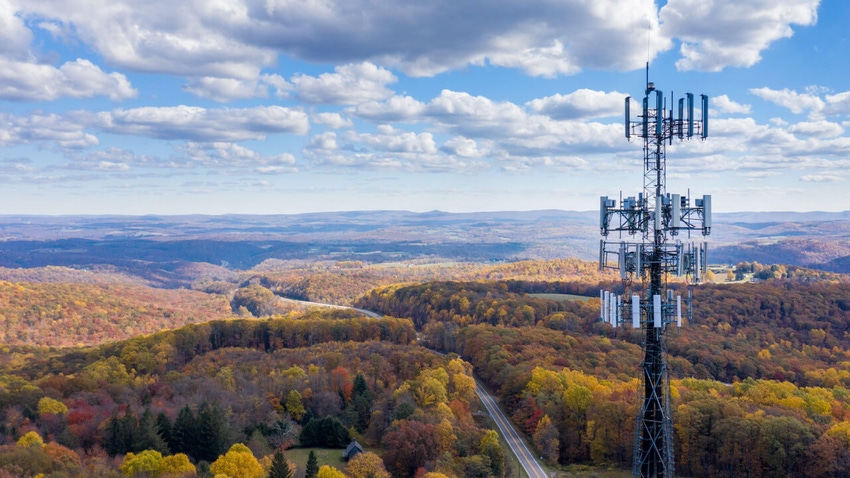FCC to consider changes to $9B fund for rural 5G
FCC Chairwoman Jessica Rosenworcel said the agency will look at new rules on how to allocate roughly $9 billion for 5G in rural areas. Some cheered the move.

The FCC's chairwoman said the agency will look at new rules on how to allocate roughly $9 billion for 5G in rural areas.
"The Commission's 5G Fund for Rural America was created to ensure the deployment of next-generation, high-speed mobile service in areas of the country where, absent subsidies, it will continue to be lacking," FCC Chairwoman Jessica Rosenworcel said in a statement. "The commission will vote to explore a series of questions on how best to harness new, granular, and improved mobile coverage data from our Broadband Data Collection to better target 5G Fund support to those areas of the country where support is most needed and where the funds could be spent most efficiently."
Some in the industry cheered the move.
"CCA welcomes the FCC announcement that it will vote to seek comment on ways to improve and advance the 5G Fund," said Tim Donovan, the CEO of the Competitive Carriers Association (CCA) trade association, which represents many small and regional wireless network operators in the US. "Much has changed since the original 5G Fund Order in 2020 and updates to eligibility, funding, and more are needed to position the 5G Fund for success."
The FCC is scheduled to discuss the topic during its next open meeting on September 21.
The background, and the issues
In the waning days of the Trump administration, when Ajit Pai was the chairman of the FCC, the agency voted to allocate $9 billion from the Universal Service Fund to establish the 5G Fund, which would be "available to carriers to deploy advanced 5G mobile wireless services in rural America," according to the agency.
But the FCC decided to wait to allocate the fund until it could develop new broadband maps, an effort that has taken several years to implement.
In the interim, T-Mobile, Verizon and AT&T have deployed lowband 5G services across much of their coverage areas. Lowband 5G though isn't much faster than 4G.
The big, nationwide carriers are also in the midst of deploying faster, midband 5G services. In that regard, AT&T now covers 175 million people with its midband 5G network, while Verizon counts about 222 million people covered with its midband C-band network – a figure the company hopes to increase to 250 million by the end of next year. T-Mobile, meanwhile, said it covers around 285 million people with its midband 2.5GHz 5G network and hopes to reach about 300 million by the end of this year.
At the same time, a number of smaller, rural wireless network operators have also started turning on 5G services in their own coverage areas, as Light Reading has previously reported.
But those rural carriers are also struggling. As T-Mobile, AT&T and Verizon all expand their networks into more rural areas, they're putting additional pressure on the small wireless network operators that were previously the only option in such locations. Some carriers, like UScelluar, are for sale as a result. Others, like Pioneer Cellular in Oklahoma and Indigo Wireless in Pennsylvania, have decided to exit the US wireless industry.
And yet another issue affecting those small carriers is the $3 billion shortfall in an FCC program designed to rip out "unsecure" telecom equipment – provided by Chinese suppliers ZTE and Huawei – from rural wireless networks. That program is intended to finance the installation of replacement equipment considered trustworthy.
An ongoing debate
Due to some of these issues, there's an ongoing debate on how to properly administer the 5G Fund. Indeed, some argue that $9 billion is not nearly enough, and that $36 billion is what is required.
For its part, the Rural Wireless Association (RWA) has been pushing the FCC to make a number of changes to the proposed 5G Fund. The association has made a series of filings to the agency in recent months on the topic.
"Given that three years have passed since the adoption of the 5G Fund Order, RWA suggested that the FCC consider refreshing the record with an eye toward permitting existing mobile carriers to opt into a cost model approach instead of the reverse auction," the association wrote in a recent filing. "RWA pointed out that there were other outdated issues with the Order related to the near complete build out of 5G by the nationwide carriers who have touted nationwide 5G coverage in their advertising materials. The elapse of time seemingly warrants a refresh of the record."
It is also not clear how the 5G Fund might be coordinated with other programs designed to finance the construction of telecom networks in rural areas, including the NTIA's massive Broadband Equity Access and Deployment (BEAD) program. BEAD is poised to allocate more than $40 billion for such networks, though some analysts don't expect that cash to actually hit the market until 2025.
Related posts:
— Mike Dano, Editorial Director, 5G & Mobile Strategies, Light Reading | @mikeddano
About the Author(s)
You May Also Like












